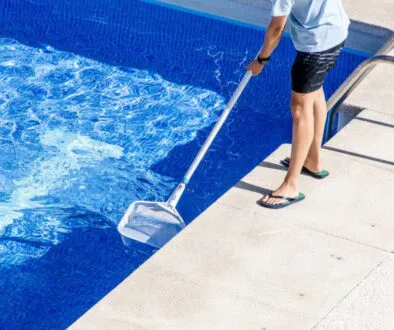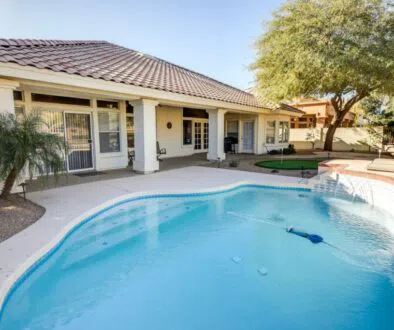How to Shock a Pool: A Quick Guide
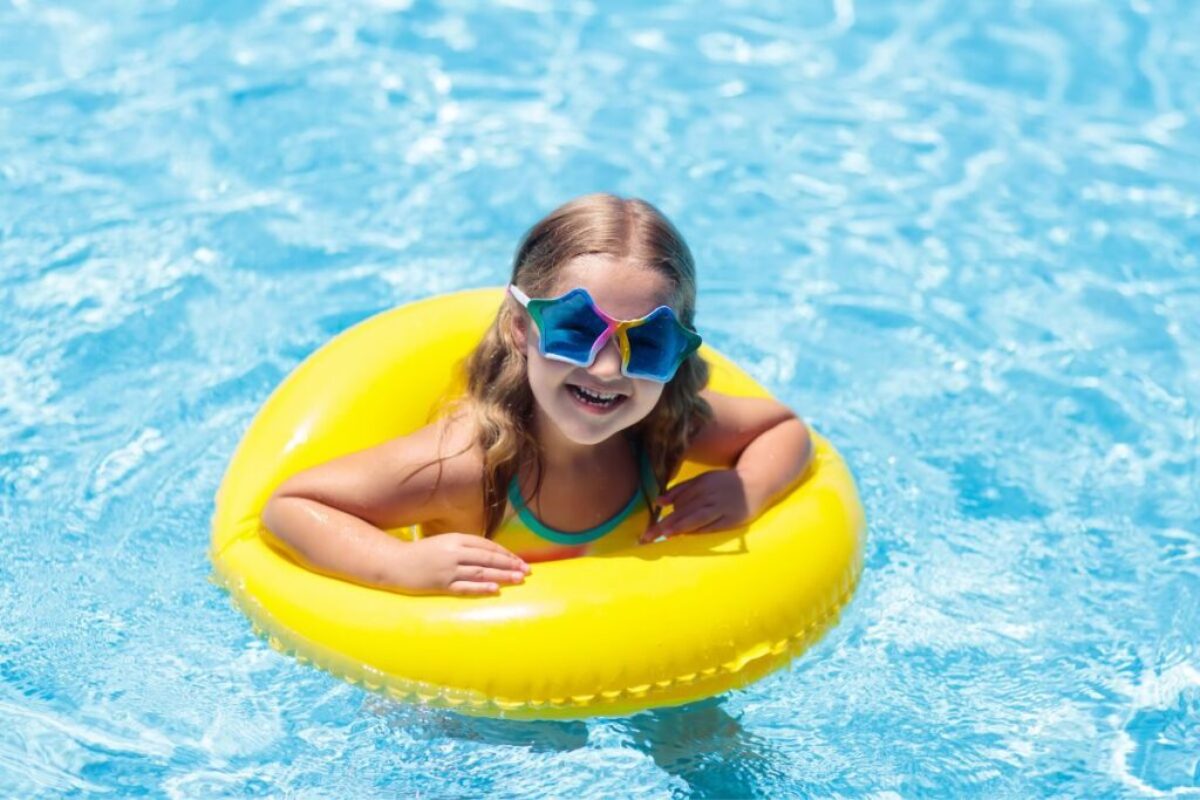
Published December 7, 2023
Picture yourself jumping into your pool on a hot day. But instead, the water is cloudy and smells strongly of chlorine. Even worse, you start to feel a burning sensation in your eyes. Far from the refreshing break you had in mind, isn’t it? This unpleasant scenario can be too real if your pool is poorly maintained.
Keeping your pool clean and safe for swimming is crucial, and one way to do this is by shocking the pool. Knowing the process on how to shock a pool helps maintain the right chemical balance and keeps the water clear and clean. But how exactly do you shock a pool?
Worry no more if you’ve ever found yourself overwhelmed by the thought on how shock for pools work. This article will show you how to keep your pool clean and ready for swimming all summer.
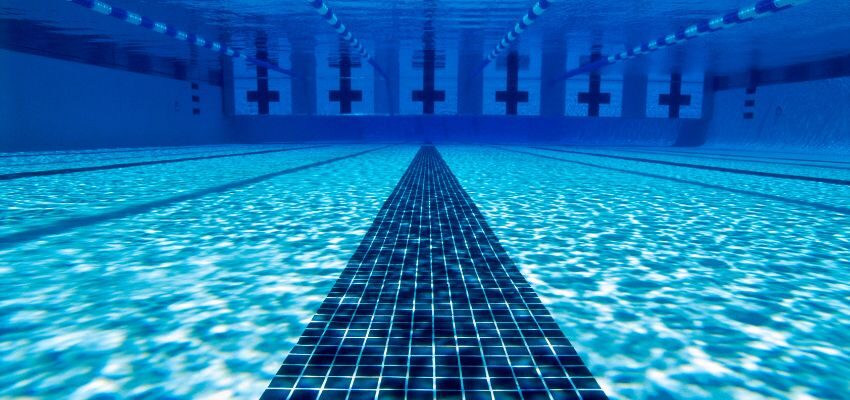
Why Shock Your Pool?
Before anything else, I’d like to explain the importance of shocking your pool.
If you’re wondering—what is pool shock? It’s a quick method to rid your swimming pool of algae. Often, pool owners shock their pools at the beginning of summer. However, it’s also good practice to shock your pool before a pool party or if you’ve missed out on several cleaning cycles.
Interestingly, the “chlorine smell” associated with pool water doesn’t come from chlorine itself. Instead, it comes from chloramines, compounds found in your pool originating from a blend of chemicals and bacteria from swimmers.
As you might’ve guessed, chloramines build up in your pool when improperly maintained. As such, that smell you associate with summer parties is a sign that the pool you’re swimming in isn’t kept in tip-top shape.
Now, keeping your pool’s water in excellent condition isn’t an easy job. Luckily, you don’t need to know all the technical details to understand how the pool shock method works. If you’re thinking—what does shock do to a pool, all you need to know is that chlorine breaks down the chloramines in the water upon shocking your pool.
With all that being said, you cannot shock your pool using regular chlorine tablets. Though pool shock is made up of chlorine, this type is highly concentrated. It’s designed to “shock” your pool to raise chlorine levels and sanitize the water.
When To Shock Your Pool?
Regularly shocking your swimming pool can avoid algae buildup in your pool’s water. Every pool is different, so coming up with a regular pool shock schedule is easier said than done. So, it’s best never to mindlessly shock your pool.
To know when it’s time for a pool shock, you must test out the water weekly using chlorine test strips. Alternatively, you may collect your pool’s water and have it professionally tested by reputable Boca Raton pool cleaners. Always watch your pool’s chlorine levels if you opt for the DIY route.
The right time to shock your pool should be when its chlorine levels exceed 0.5 or when the free chlorine level of your swimming pool measures zero.
Below are some other times when you should shock your pool:

1. Upon The Start Of Summer
Algae and bacteria will build up as your swimming pool remains stagnant during the fall and winter months when it’s not used. Thus, doing a pool shock once summer begins is good practice to ensure you don’t swim in dirty pool water.
2. Following Prolonged Periods Of Hot Weather
Bacteria and algae thrive in hotter environments. Moreover, the cleaning properties of chlorine become diminished when temperatures get too high. So, it’s good to have your pool shocked now and then during a prolonged summer heatwave.
3. Once Your Swimming Pool Emits A Strong Smell
The smell of swimming pools that you associate with chlorine does not actually come from chlorine. It originates from chloramines, compounds that form from the chemicals in your pool, along with the bacteria and other matter from swimmers.
If your pool has a strong smell, it is more likely that you will need to shock the pool. Why so? The stronger your pool smells, the dirtier it is, even if it may seem clean by looks alone.
4. After Excessive Use
When swimmers use your pool, they’re bound to contaminate it with bacteria. Due to that, it’s advisable to have your swimming pool shocked following a large summer pool party.
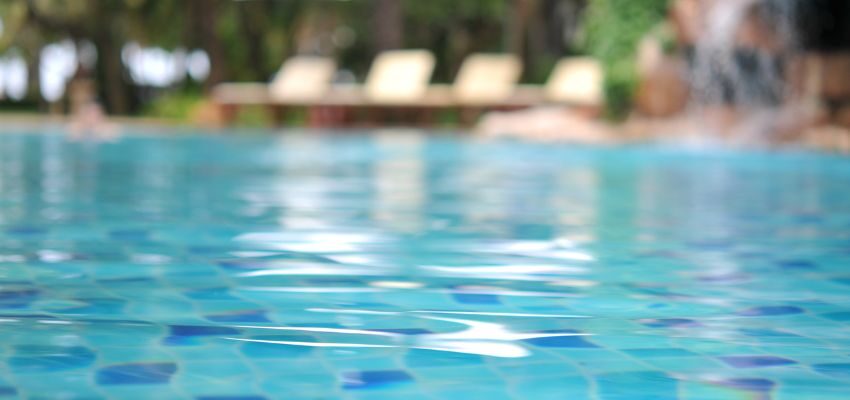
The Different Types Of Pool Shock
Not all pool shocks are created equally, like many other products. Some work differently from others. With that said, there are two types of pool shock that you should know about:
-
Chlorinated Pool Shock
Chlorinated shock is the most common type of pool shock that’s used. It’s available in a myriad of different forms. Examples include lithium hypochlorite, calcium hypochlorite (Cal Hypo), and Dichlor. All types have different purposes, but they all work to clean your pool by quickly adding chlorine.
To make chlorinated pool shock work best, use it only after dusk when sunlight and heat are gone. You should also know that most types of chlorinated pool shock have a harsh effect on your skin. Hence, you must wait eight hours before swimming in your pool after shocking it.
Many pool owners use both chlorinated and non-chlorinated pool shock as a common practice. The latter makes your water clear, while the former kills germs, bacteria, and algae.
-
Non-Chlorinated Pool Shock
Non-chlorinated pool shock is also known by many as an oxidizer. Unlike its chlorinated counterpart, it’s made of potassium salt, which doesn’t kill bacteria and germs. Instead, it clarifies water and slows down algae buildup in your pool.
We recommend non-chlorinated pool shock if your pool doesn’t emit a strong smell yet. You can jump into your pool again right after applying it because it’s not as strong as chlorinated pool shock.
Basics On How To Shock A Pool
Shocking a pool is crucial in maintaining a clean and safe swimming environment. Before starting the shock treatment for pool, safety is paramount. Wear protective equipment, such as goggles and gloves. Doing so prevents any chemicals from contacting your skin or eyes.
Materials Needed
- Pool Shock (Calcium Hypochlorite/Dichlor)
- A clean, 5-gallon bucket
- Protective goggles and gloves
- Pool test strips or a liquid testing kit
- Pool brush
- Water
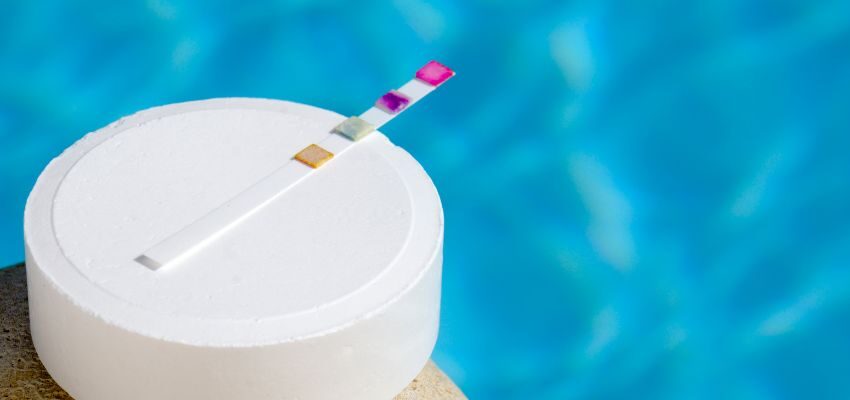
Guide On How To Shock A Pool
- Determine the Type of Shock Needed: There are various options for pool shock, including calcium hypochlorite (Cal Hypo) and Dichlor. Select the one that aligns with your pool’s specific requirements and preferences.
- Test Your Pool Water: Use pool test strips or a liquid test kit to know the current chlorine level in your pool. This step will help you understand how much shock you need to use.
- Calculate the Amount of Shock Required: The next question that comes to mind—how much shock to add to pool? Your pool’s required quantity of shock is determined by its size and the existing chlorine level. Generally, if the chlorine level is significantly low or there’s visible algae, you’ll need approximately one pound of pool shock for every 10,000 gallons of water.
- Prepare the Shock: Wear your protective goggles and gloves, and add the appropriate amount of shock to a 5-gallon bucket filled with warm water. Combine the mixture until the shock fully dissolves.
- Apply the Shock to Your Pool: Gently pour the dissolved shock solution along the edges of your pool, aiming for even distribution. Take care to ensure it spreads evenly around the perimeter.
- Brush Your Pool: Once you have administered the shock treatment, it’s advisable to brush the sides and bottom of your pool thoroughly. This helps distribute the shock evenly and removes persistent algae.
- Wait and Retest: Before swimming, it’s essential to wait until the chlorine level drops to a safe level (below five ppm). The time it takes for this process to happen can vary. It depends on how much chlorine is present at the beginning, and how strong the sunlight is. It can take anywhere from 8 hours to a few days. To make swimming enjoyable and safe, it’s important to maintain the right chlorine balance.
Remember, shocking your pool should be done at dusk or nighttime when the sun is down, as sunlight can reduce the effectiveness of chlorine. To keep your pool clean and healthy, shock it once a week during peak swimming season or after heavy rain.
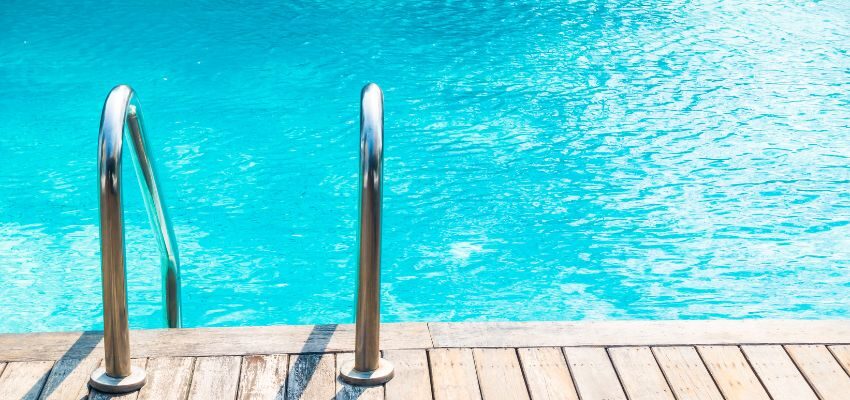
Frequently Asked Questions On How To Shock A Pool
1. What’s the ideal time for the pool shock treatment?
Since chlorine’s effectiveness diminishes due to sunlight and heat, you should shock your pool once the sun goes down.
2. How long after shock can you swim?
If you use chlorinated pool shock such as Cal Hypo or Dichlor, you must wait at least 8 hours before jumping into your pool again. Deciding to plunge into the pool early can lead to skin issues.
3. Does pool shocking take a long time to do?
No. The entire process of pool shocking should not last longer than 1 hour. However, remember that the larger the swimming pool, the longer the procedure.
4. Do you put pool shock directly in the pool?
While some products can be directly added to the pool, most of the pool shock products require mixing with water before use. Make sure to carefully read the instructions on the packaging and mix it in a large-sized bucket before adding it to the water.
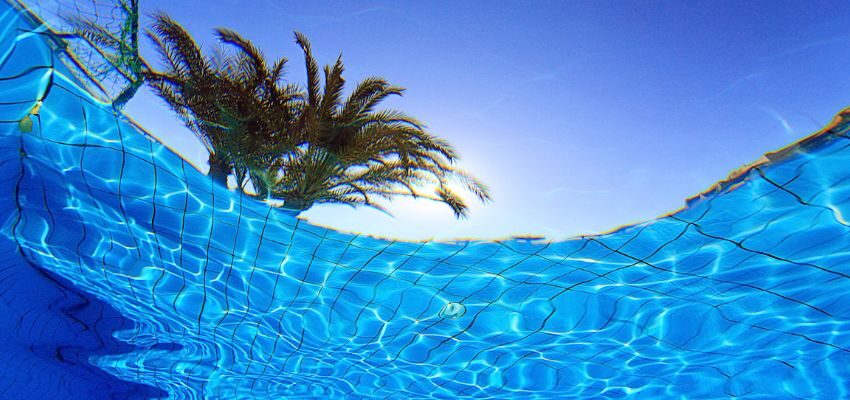
Mastering The Art Of Pool Shocking
A dirty pool is something that nobody wants to have. Besides being a sight for sore eyes, a pool that isn’t clean is also a health risk to you and everyone else in your household. With this in mind, knowing the basics on how to shock a pool will be valuable.
Having a pool with dirty water can be avoided if you maintain a regular pool shocking schedule. Moreover, maintaining this schedule will save you a ton of cleaning time in the long run.
Getting ahead of algae and bacteria is a sure way to bypass more intrusive and expensive swimming pool cleaning solutions. Thus, you must take pool shocking seriously and conduct it regularly.
Hire Boca’s Favorite Pool Builders
Excel Pool and Patio Solutions is your trustworthy provider of pool services in Boca Raton. We are experts in pool and patio remodeling and can handle your resurfacing needs as well. Our technicians are vetted and trained for your guaranteed satisfaction. Get to know us by browsing our website or reaching out to us with any questions.
Contact our team today to request a free estimate for pool construction, maintenance, repairs and more.
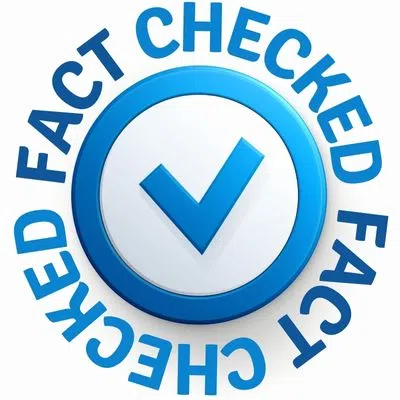
Fact Checked By Experts
This is original content and has been diligently fact checked by our internal team of experts. Discover more about the rigorous editorial standards we uphold for our website here.

About The Author
Meet Rei Bayucca, a seasoned writer with extensive expertise across multiple industries. Her mission is to captivate and enlighten readers with insightful and masterfully-written articles that both inspire and inform.

